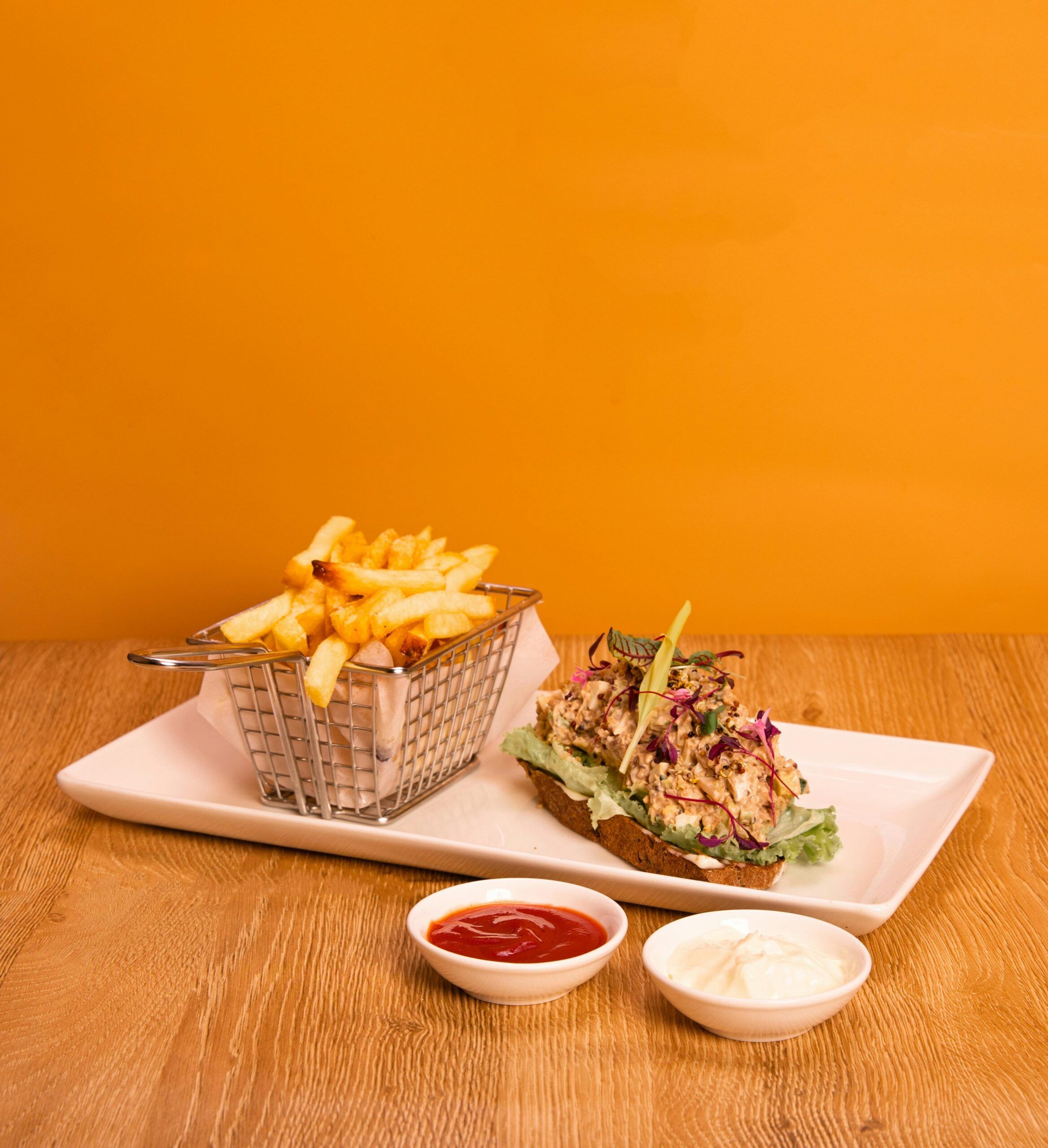- Menu Mistake: Why Gut Instincts Kill Restaurant Profits?
- What Data-Driven Menu Decisions Really Mean For Restaurants?
- The 5 Critical Data Points Every Profitable Restaurant Tracks
- Menu Optimization Strategies Based On Data Insights
- Technology Stack: Tools For Data-Driven Menu Management
- How Orders.co Supports Data-Driven Menu Decisions
- FAQ
Keeping your menu consistent, online and in person, matters more than ever.
When customers see one thing online and get something different in the restaurant, it creates confusion and damages trust.
If you run your own place, you know how fast things move. Prices change. Items sell out. Descriptions need updates.
And managing all of this across multiple platforms and printed menus can feel like a full-time job.
This article outlines seven practical ways to keep your digital and physical menus in alignment.
These aren’t just tips, they’re tools that work in real restaurants every day. With solutions from Orders.co, making data-driven menu decisions becomes significantly easier.
Let’s get into it, and if you’re looking for a better way to manage your menus, take a look at what Orders.co offers.
Key Takeaways
- Relying on gut instincts instead of data can lead to costly menu mistakes.
- Data-driven menu decisions help identify high-margin, high-demand items to promote.
- Tracking sales, profitability, customer behavior, and trends is essential for optimization.
- Underperforming dishes should be removed to streamline operations and boost efficiency.
- Dynamic pricing strategies based on real data protect profits without hurting customer loyalty.
- Consistent menus across online and in-person channels build trust and reduce confusion.
- Technology tools like Orders.co simplify analytics, updates, and performance tracking.
- Real-time insights allow restaurant owners to adapt quickly and make confident decisions.
Menu Mistake: Why Gut Instincts Kill Restaurant Profits?
Many restaurant owners build their menus based on instinct. A dish tastes great, so it must sell well. A new trend pops up, so they add it without checking the numbers. While intuition has its place, it’s not enough to keep a restaurant profitable.
Relying only on guesswork often leads to poor results. You might end up keeping dishes that don’t sell or cost more to make than they earn. Or you could be underpricing your most popular items, leaving money on the table without even realizing it.
Take this example
A small fast-casual restaurant in California thought their grilled veggie wrap was a bestseller. It looked popular during lunch hours, so they kept it front and center on the menu.
After reviewing sales data for three months, they found it made up only 6% of total sales and had one of the lowest profit margins. Meanwhile, their turkey club sandwich, often overlooked, had a 28% margin and was frequently ordered through online delivery.
By adjusting the menu layout and promoting the turkey club more, they saw a 15% increase in average order value over two months.
The Financial Cost of Ignoring Data
When you skip the data, you risk:
- Wasted ingredients
- Lost revenue
- Missed opportunities
Data shows you what sells, what doesn’t, and where the money really comes from.
Orders.co’s restaurant menu management feature simplifies this process. It collects and organizes the data you need to understand how your menu is performing.
What Data-Driven Menu Decisions Really Mean For Restaurants?
Data-driven menu decisions are about using real numbers to guide what goes on your menu. It means looking at how each item performs, how much it costs to make, and how customers respond to it. On average, customer analytics can drive 19 times greater profitability for a sale.
Then, using that information to decide what stays, what goes, and what needs adjustment.
This approach is different from traditional menu planning. Instead of guessing or copying competitors, restaurants use data to shape their menus around what actually works for their business and their customers.
Let’s say you want to know if a dish is profitable. A data-driven system helps you break that down: sales volume, ingredient cost, prep time, and customer feedback. You get a clear view of how that item impacts your bottom line.
Orders.co makes this practical. It’s built-in analytics give restaurants access to sales data, pricing reports, and performance insights in one place. This helps operators make confident, informed choices about their menu.
See This and Other Tools In Action
When you know the facts, you can take action that protects your profits and keeps customers coming back.
The 5 Critical Data Points Every Profitable Restaurant Tracks
Making smart menu decisions starts with tracking the right information. Here are five essential data points that help restaurant owners understand what works, what doesn’t, and where to focus for better while doing menu profitability analysis.
1. Sales Performance Analytics
This goes beyond simply counting how many of each item you sell. It includes understanding:
- Which items are ordered most often
- When they’re being ordered (peak hours, days of the week)
- What items are commonly purchased together
These patterns reveal what draws customers in and which items might deserve a more prominent spot on your menu.
2. Menu Profitability Metrics
A popular dish isn’t always a profitable one. That’s why it’s essential to consider the costs associated with each item, including ingredients, preparation time, and overhead expenses such as packaging or utilities.
Focus on these numbers:
- Ingredient and supply cost
- Time and labor needed to prepare
- Overhead distribution
When you compare these costs with sales, you get a better picture of the actual margin. This tells you which items are helping your profits and which might be dragging you down.
3. Customer Behavior Data
Knowing what your customers like and how they interact with your menu can make a big difference.
Look for:
- Items that perform best in dine-in vs. delivery
- Frequent substitutions or special requests
- Trends in feedback or online reviews
These insights help you align your menu with real customer preferences.
4. Competitive Intelligence
It helps to know how your menu compares to others. This doesn’t mean copying the competition, but being aware of trends and customer expectations in your segment.
Consider:
- Price comparisons with similar restaurants
- New and seasonal items showing up elsewhere
- Unique selling points that help you stand out
Staying informed helps you make smart updates and stay relevant in your market.
5. Implementation Framework
All this data is only helpful if you can put it into action.
You’ll need:
- A way to collect data automatically from POS and online orders
- Simple, central reporting that updates regularly
- A trained team that knows how to respond to what the numbers show
Orders.co’s restaurants’ online orders management feature helps restaurants do just that by bringing everything into one dashboard. You can view sales, menu performance, and customer feedback in one place.
Also, read:
- Restaurant Menu Optimization: 10 Steps For A Menu That Sells
- 6 Menu Management Tips: Smart Steps For Better Results
- QR Menu Makers Compared: Orders.co vs. FineDine
- Why Should Your Restaurant Offer a Customizable Online Menu?
Menu Optimization Strategies Based On Data Insights
Once you have the right data, the next step is using it to fine-tune your menu. Smart restaurants don’t just gather insights; they act on them. Here are some proven ways to apply your analytics to improve menu performance and profitability.
Promote High-Performing Items
If certain dishes consistently sell well and have high profit margins, make them more visible.
You can:
- Feature them at the top of your menu
- Highlight them with visuals or icons
- Suggest them as staff recommendations
These small changes can push high-value items to the spotlight and increase your average ticket size.
Phase Out Underperformers
Some dishes may cost too much, take too long to prepare, or just don’t sell. If the data confirms this, it might be time to retire them. Doing so can:
- Reduce kitchen complexity
- Save on inventory and prep time
- Make room for better options
Streamlining your menu helps customers make faster choices and helps your team work more efficiently.
Adjust Pricing With Confidence
If ingredient costs have gone up or demand is higher than expected, pricing might need to change. Use your data to:
- Identify which items can handle a small price increase
- Spot pricing inconsistencies across platforms
- Rebalance value between low and high-margin items
Customers are often more willing to pay slightly more for proven favorites than for untested items.
Adapt Seasonally or Regionally
Look at trends in your data to see which items perform best in certain seasons or regions. This can help you:
- Plan limited-time offers
- Rotate items based on demand patterns
- Personalize your offerings by location
Orders.co provides the tools to identify these patterns quickly. With this level of insight, your menu stays relevant, appealing, and profitable year-round.
Technology Stack: Tools For Data-Driven Menu Management
Tracking and analyzing menu data doesn’t have to be complicated. But it does require the right tools.
For most restaurants, the goal is simple: gather accurate information, view it in one place, and use it to make better decisions.
Here’s what a practical menu analytics setup looks like:
- Point of Sale (POS) System: This is where most of your data comes from, orders, item sales, modifiers, and timing. Your POS should allow easy exports or integrations so you’re not stuck digging through spreadsheets.
- Menu Management Platform: You need a tool that helps you update your menu quickly across all channels (in-store, online ordering, third-party apps). This ensures consistency and makes testing changes easier.
- Analytics Dashboard: Look for a platform that gives you sales trends, pricing insights, and performance breakdowns by item. The easier it is to read, the more useful it will be during your weekly reviews.
- Integration Tools: Your systems should talk to each other. The fewer manual steps, the better. Integration helps reduce errors and keeps your data current.
Together, these tools give restaurant owners a clear picture of what’s working and the ability to act on it quickly.
How Orders.co Supports Data-Driven Menu Decisions
Putting data into action doesn’t have to be overwhelming. Orders.co is built to help restaurant owners make better menu decisions without spending hours buried in reports or juggling multiple systems.
All Your Menu Insights in One Place
Orders.co simplifies the process of understanding your menu performance. Instead of switching between systems or sifting through spreadsheets, you get a single platform that brings together the data you need.
You can see which dishes are performing well, how much profit they generate, and what your customers are responding to the most. This helps you move from gut decisions to clear, confident actions.
Smart Decisions Made Practical
The platform doesn’t just show you numbers, it gives you the tools to act on them. You can adjust pricing, try out a new dish, or remove a low-performing item, all from the same dashboard.
Once changes are made, Orders.co tracks their performance so you can see if your choices are paying off. This real-time feedback helps you stay agile and focused on what works.
Connected to the Tools You Already Use
Orders.co works alongside your existing POS and delivery systems, so there’s no need to do extra work to collect or sync data.
Everything updates automatically. You get accurate reports without the manual effort, and your team spends less time troubleshooting and more time focusing on improving the menu.
Orders.co isn’t just about collecting data; it’s about helping restaurant operators make the right decisions faster, with confidence backed by facts.
Schedule a Free Demo
FAQ
What data should restaurants track for menu decisions?
Track item-level sales, food costs, labor time per dish, and ordering trends by location or time of day. Go beyond just “what’s selling” to include how profitable each dish is, how often it’s modified, and how it performs across dine-in and delivery. This helps you decide what deserves prime placement and what might be quietly hurting your margins.
How do data-driven menus increase restaurant profitability?
They stop you from guessing. With actual numbers behind each decision, you avoid promoting dishes that look popular but lose money. You can adjust pricing where it matters, focus marketing efforts on high-margin items, and rotate in new items with lower risk. Over time, this leads to better average check sizes and healthier profit margins.
What metrics indicate menu item success or failure?
The key indicators include net profit per item, sales consistency, and the frequency at which customers choose or ignore the dish. Watch for high-labor, low-margin items that may seem popular but drain resources. Also, take note of meals that are often reordered, these are the ones to keep and promote.
How often should restaurants analyze menu performance?
A monthly review is a must. But if you’re running promotions, seasonal specials, or making pricing changes, check your data weekly. Frequent reviews help you catch problems early, before they start costing you money, and allow for quick pivots based on what the numbers show.
What tools are needed for restaurant menu analytics?
You’ll need a POS system that captures clean data, a menu management platform for fast updates, and an analytics tool that puts everything in one place. Orders.co is built specifically for this. It connects with your systems, tracks performance, and helps you take action without bringing in extra software or staff.
How do you calculate menu item profitability?
Start with your selling price. Subtract all costs tied to that item, ingredients, labor, packaging, and even things like sauces or disposables. What’s left is your per-item profit. When you compare this across dishes, it’s easier to decide what stays on the menu and what needs rethinking. With Orders.co, these reports are already calculated so that you can focus on the decisions, not the math.



